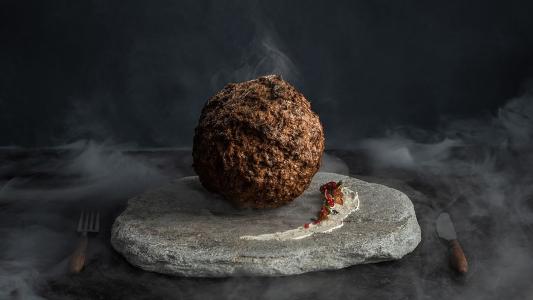Cambridge University researchers have developed a colorful passive cooling film that can keep surfaces nearly 20 F cooler than the surrounding air — potentially giving us a way to stay comfortable without blasting the AC, or painting over cities into seas of white.
The challenge: Besides making us more comfortable, air conditioning can increase learning in schools and productivity at work on hot days, and when temperatures truly soar, it can literally save lives.
ACs are also major polluters, though, generating about 4% of the world’s greenhouse gas emissions, and because they simply move hot air from inside cars and buildings to the outside, they contribute to extra local warming in cities.
“Our materials can make people’s homes be cooled down and good-looking at the same time.”
Qingchen Shen
Passive cooling: To combat climate change, we need to find ways to stay cool that don’t include cranking up the AC — and passive daytime radiative cooling (PDRC) could be a major part of the solution.
It’s a cooling method where a surface is modified so that it reflects sunlight and heat into the atmosphere. When applied to the exteriors of buildings or cars, the result is that the interior stays cooler, minimizing the need for AC.
The limitation: We’ve seen remarkable examples of paints, films, and papers capable of passive cooling, but they don’t have much visual variety — the majority are either white or have a mirrored finish.
“To make materials that remain cooler than the air around them during the day, you need something that reflects a lot of solar light and doesn’t absorb it, which would transform energy from the light into heat,” said principal investigator Silvia Vignolini.
“There are only a few materials that have this property, and adding color pigments would typically undo their cooling effects,” she continued.
Bright side: Vignolini and her colleague Qingchen Shen have now figured out a way to create vibrant blue, green, and red passive cooling films — potentially giving us an environmentally friendly way to cool buildings and cars without having to paint them all a boring white or giving them a blinding mirrored finish.
“In a hot summer, our materials can make people’s homes be cooled down and good-looking at the same time,” Shen explained during the spring meeting of the American Chemical Society.
How it works: Cellulose — found in plant cell walls — turned out to be the key to creating colorful passive cooling films.
It naturally promotes cooling, and cellulose nanocrystals (CNCs), which can be extracted from wood, cotton, and other renewables, have prismatic properties, similar to how the surfaces of soap bubbles reflect light in a multitude of colors.
To create their film, the Cambridge team combined CNCs with a white-colored material made from ethyl cellulose.
“So the first layer is made by the CNC for generating the color, and then the second layer is a porous, highly scattering ethyl cellulose layer,” said Shen. “The purpose of this highly scattering layer is to scatter any light that penetrated the first CNC layer back.”

The team was able to create blue, green, and red films in this way, and during testing under direct sunlight, they were, on average, 5.4 F cooler than the ambient air. At night, the average difference increased to 16.4 F, with a maximum difference of 19.8 F.
For comparison, the whitest-white paint — developed by researchers at Purdue University — keeps surfaces an average of 9.9 F cooler than the ambient air under direct sunlight and up to 20 F cooler at night.
Looking ahead: The Cambridge researchers say they were able to prepare several meters of their passive cooling film at a time in a standard manufacturing line, and it could be produced cost-effectively at scale.
It can also be given different textures, similar to wood finishes, and is robust, but the environment can affect the color — the team is now working to make the film more durable in the hope that future versions could help us keep our colors and our cool homes.
We’d love to hear from you! If you have a comment about this article or if you have a tip for a future Freethink story, please email us at [email protected].






